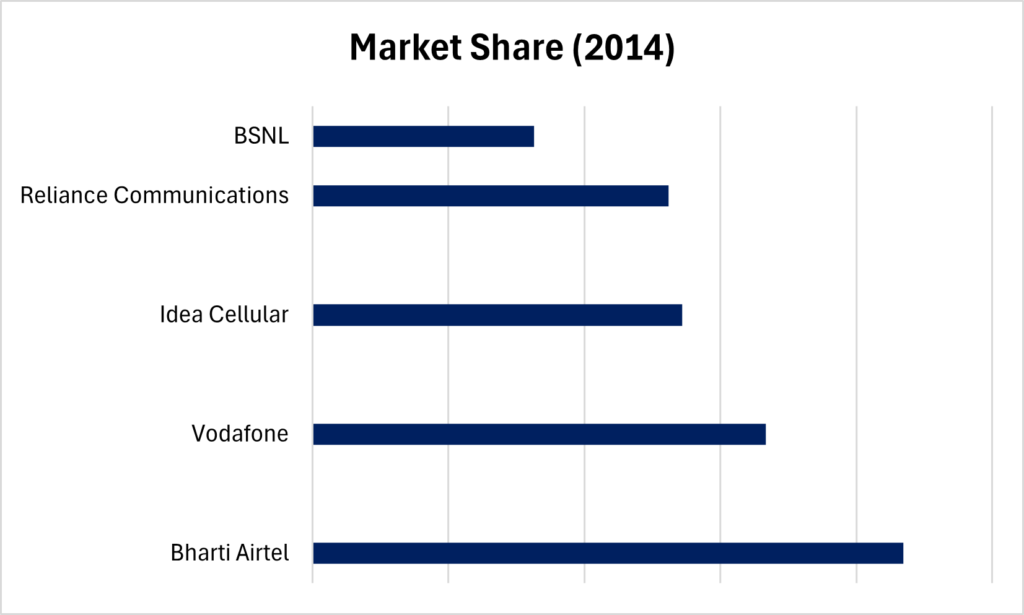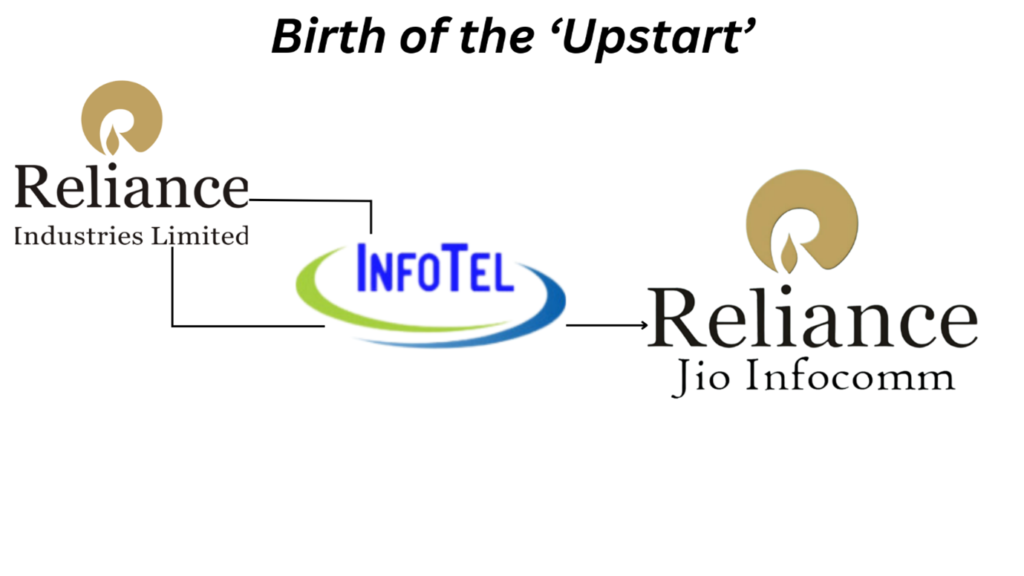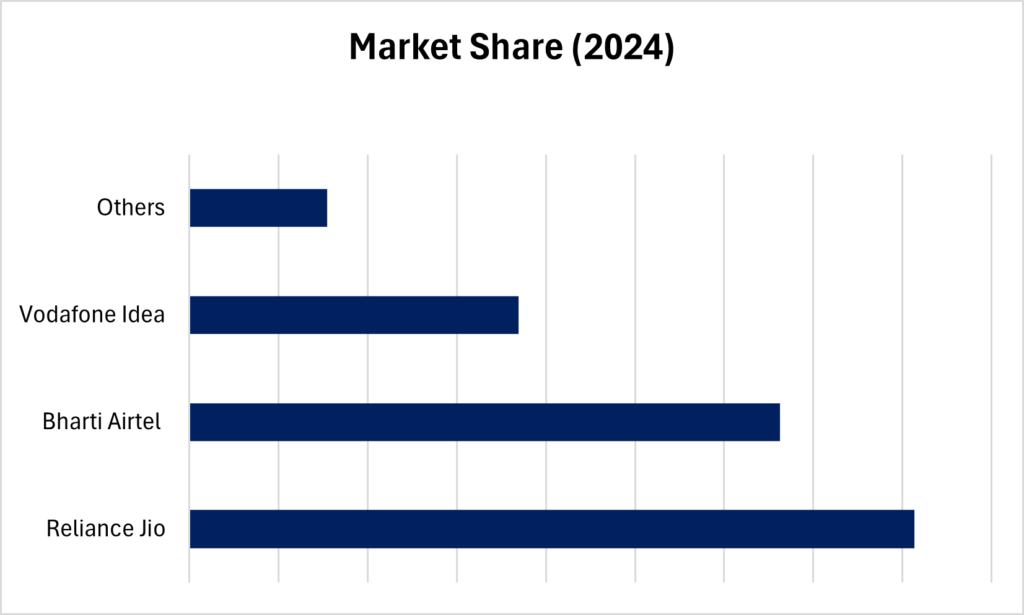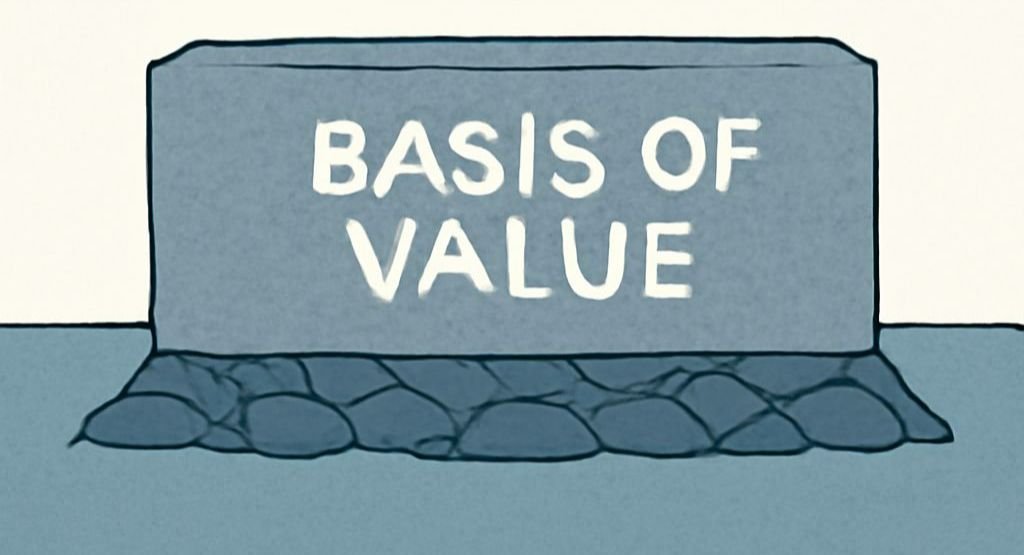Govt. to the Rescue

In this week’s TOPICAL UPDATE, we’ll discuss why Vodafone Idea is struggling and how the new steps taken by the government will elevate its condition.
We Indians love our internet. Whether it’s for work, entertainment, food, shopping, travel, or leisure activities like scrolling through reels (which is highly addictive and the bane of my existence), the internet is a central part of our daily lives. Today, the Indian market is very attractive for the digital economy. We see many billion-dollar companies and numerous high-tech startups emerging in the country. This growth is supported by some of the lowest data rates globally. Consequently, India has one of the highest per capita data consumption rates, and our telecom sector is now the largest in the world outside China.
We all know that this transformation has been largely due to Reliance Jio, which disrupted the industry, eliminated competition, and elevated the Indian market to a new level. However, it’s not just the Jio effect; the Indian telecom market has experienced many ups and downs, including intense competition, changing government regulations, scandals, and regulatory changes that have diminished competition—enough material for a novel. Amid these significant changes over the last decade, one company has repeatedly struggled but has yet somehow managed to keep standing: Vodafone Idea Ltd. The company has faced massive debt burdens and seen its main promoters abandon it.
However, the government has recently announced a new resolution offering much-needed relief that could save Vodafone Idea from bankruptcy or another merger.
Let’s start by looking at how it all began and the major changes over the years that have led to the current situation.
1995-2009: The Beginning of an Era

1985-1995: The Indian telecom sector began with the separation of the Department of Telecommunications (DoT) from Indian Post & Telegraph in 1985, leading to the launch of VSNL and MTNL in 1986. The National Telecom Policy of 1994 allowed private sector involvement, and in 1995, the country was divided into 22 telecom circles for the purpose of telecom licensing.
1997: The Telecom Regulatory Authority of India (TRAI) was established to regulate the increasing number of private companies entering the market, such as Modi Telstra, BPL Mobile, Tata Teleservice, and Bharti Airtel.
1999: The New Telecom Policy introduced a revenue-sharing model where operators paid a percentage of their Adjusted Gross Revenue (AGR) as license fees, varying by telecom circle category.
2000s: BSNL was established, ending VSNL’s monopoly on international calls. The Unified Access Service License (UASL) in 2003 allowed operators to offer both fixed-line and mobile services under one license, increasing competition with new entrants like Hutchison Essar and Vodafone India.
Till now, The telecom industry was in its foundational phase. After that, it entered the exhilarating period of growth and innovation.
2010-2015: Competition Heat Up
3G Spectrum Auction – In 2010, India held its first auction for 3G network spectrum, which was highly competitive. Telecom companies aimed to enhance their market presence by offering higher speeds and better coverage. The auction raised Rs. 67,700 crore, with Airtel and Vodafone Essar being the top spenders, paying Rs. 12,295 crore and Rs. 11,618 crore respectively. This significant investment highlighted their commitment to the Indian market.
2G Spectrum Scam – The same year, the telecom sector was hit by the 2G spectrum scandal. Licenses were allocated at under valued prices, causing a loss of ~Rs. 1.76 lakh crore to the government. The Supreme Court later canceled 122 licenses in 2012 as a result of this scam, leading to significant policy changes that continue to affect operators.
Despite these challenges, the telecom sector continued to grow. Telecom companies invested heavily in brand-building activities to capture market share. Notable campaigns included Airtel’s “Har Ek Friend Zaroori HotaHai,” Idea Cellular’s “What an Idea Sirji,” and Vodafone’s remarkable “Zoo Zoo” ads. These campaigns helped shape brand identities and foster consumer loyalty.

Now, these two significant events during this era transformed the telecom industry. Many are familiar with the story. Yes, I am talking about Jio Infocomm Ltd.’s creation.
Infotel Broadband Ltd – In 2010, this relatively unknown company with a net worth of Rs. 2.49 crore, participated in the 4G spectrum auction by securing bank guarantees worth Rs. 252.5 crore from Axis Bank. While telecom companies heavily invested in the 3G spectrum in May 2010, they showed less interest in the 4G auction. Infotel emerged as the only company to win the pan-India 4G spectrum when the auction ended in June 11, 2010, for Rs. 12,847 crore.
In May 2010, the non-compete agreement between Anil and Mukesh Ambani was modified, allowing Reliance Industries to enter the telecom sector. By June 11, 2010, Reliance acquired a 95% stake in Infotel by investing Rs. 4,800 crore as fresh equity capital. Competitors were initially unconcerned about Reliance’s entry because different licenses were required for mobile calls and internet services but all of that changed in 2013.
Unified Licensing (UL) regime – The statement is accurate. In 2013, the DoT introduced a Unified Licensing regime to streamline the licensing process. This system allowed telecom operators to offer multiple services, such as voice, data, and internet, under a single license, which was not allowed before, removing the need for separate licenses for each service. The goal was to create a level playing field by eliminating barriers between different types of telecom services, thereby encouraging competition. This change enabled companies with 4G spectrum to provide a full range of services because 4G technology supports these capabilities. The new regime reduced bureaucratic hurdles and made it easier for new players to enter the market without any burden of the older infrastructure.
Thus began the era of Reliance Jio
Reliance Jio: The Great Consolidation

Reliance Jio was publicly launched on September 5, 2016. Its entry into the Indian telecom market had profound repercussions, leading to significant changes in the competitive landscape and market consolidation.
- Disruptive Pricing: Jio introduced free voice calls and extremely low-cost data plans, which forced other telecom operators to drastically reduce their tariffs to remain competitive. This led to a price war in the industry.
- Increased Data Consumption: Jio’s affordable data plans resulted in a massive increase in mobile data consumption across India, making the country one of the largest consumers of mobile data globally.
- Network Expansion: Jio’s extensive 4G network coverage pushed other operators to invest heavily in upgrading their networks to 4G and beyond, accelerating technological advancements in the sector.
Between FY13 and FY18, RIL invested $30Bn to develop and expand its 4G network across the country. The intense competition and financial strain caused by Jio’s entry led to significant consolidation in the telecom sector:
Vodafone and Idea Cellular: These two companies merged to form Vodafone Idea Limited in August 2018, aiming to create a stronger entity capable of competing with Jio.
Aircel: Filed for bankruptcy in 2018 due to financial distress exacerbated by the competitive pressures.
Tata Teleservices: Sold its consumer mobile business to Bharti Airtel in 2017.
Reliance Communications : Faced severe financial difficulties and eventually shut down its wireless operations.
Reliance Jio’s entry significantly reshaped the Indian telecom market, leading to consolidation and pushing existing players to innovate and adapt quickly. As a result, the number of telecom operators in India decreased from 9 to now just 3 major private players, who hold ~92% of the market share.
Airtel managed to maintain its position by making strategic decisions, such as divesting non-core businesses and investing heavily in 4G infrastructure. This success was largely due to the strong commitment of its highly motivated promoter. Unfortunately, as most of us know, Vodafone India did not fare as well in this competitive environment.
Vi Current Situation: The Orphan
1. High Debt Levels: Vodafone Idea Limited has been burdened with high debt levels since its merger, mainly due to the legacy liabilities of both Vodafone and Idea. At the time of the merger, Vodafone brought in a net debt of Rs. 55,200 crore, while Idea contributed Rs. 52,700 crore. These financial obligations include spectrum dues and regulatory charges.
2. AGR Dues: In October 2019, the Supreme Court upheld the DoT interpretation of AGR, which included non-core revenues like rent, interest income, dividends, and sale of assets. This ruling resulted in additional dues for telecom companies, with Vodafone Idea facing AGR dues of Rs. 58,254 crore, which increased to Rs. 70,320 crore by the end of FY24 due to interest. Out of all companies, Vi was affected the most because of this decision.
3. Operational Challenges: The merger process was complex and took about a year and a half to complete, delaying the realization of cost synergies and operational efficiencies.
4. Subscriber Base Decline: Vodafone Idea has seen a decline in its subscriber base due to operational inefficiencies and connectivity issues, leading to customer dissatisfaction and a loss of market share.
5. No Investment from Promoters – Vodafone Idea’s parent companies, Vodafone Group Plc and the Aditya Birla Group, refused to infuse additional cash into the company due to several financial challenges. The refusal to inject more capital is also influenced by the company’s inability to raise funds independently and the lack of new investors willing to invest in the telecom firm.
Therefore, despite becoming one of India’s largest telecom operators with a significant subscriber base, Vodafone Idea struggled to maintain its market position due to financial difficulties and competitive pressures.

However, the outlook for the company has started to improve mainly due to two major steps taken by the government.
Major Relief
In 2021, the Indian government approved a relief package for the telecom sector, which included a four-year moratorium on spectrum payments. This allowed telecom companies like Vi to defer their spectrum payment installments from October 2021 to September 2025, easing financial pressure. Companies would pay interest on the deferred amounts, with an option to convert this interest into equity, potentially giving the government an equity stake. Additionally, the requirement for bank guarantees was removed for subsequent auctions, further alleviating financial burdens.
Recently, on November 25, 2024, the government announced another relief measure by waiving bank guarantees for older spectrum holdings that came out before 2022. This decision is expected to provide Rs. 33,000 crore in relief to the telecom sector, with Vi gaining benefits to the tune of Rs. 25,000 crore. This waiver will give lenders more flexibility to extend credit to Vi as it seeks to expand its 4G operations and roll out 5G services to compete with Reliance Jio and Airtel.
Further, telecom companies originally were required to pay an additional amount for three months along with their annual payments as a security for the next year’s payment. However, new conditions allow companies to provide a bank guarantee for three months instead of paying extra in advance, allowing the companies to use that capital in the business. These change will help Vi by reducing its short-term financial burden, allowing to focus more on surviving and gaining market share instead tying up its capital or bank loans in the payments from the past.
Conclusion:
As of September 2024, Vi Ltd.’s deferred payment obligations for spectrum and AGR stand at Rs. 2.22 lakh crore. Previously, the company would have needed to submit bank guarantees worth Rs. 24,747 crore, a substantial amount. With the waiver, Vi has freed up more capital, making banks more willing to lend to the company. This is crucial as Vi has struggled to secure Rs. 25,000 crore in debt funding necessary for its operations and network expansion. This relief allows Vi to continue competing in a market that is increasingly becoming a duopoly.
So what do you think about this move from the GoI? Let us know by replying to this email. We look forward to knowing your views.
Meme of the Week

Follow us
If you are a diligent investor, you would not want to miss checking out our research platform, where we share insightful research on companies regularly. Gain access to our sample research by clicking on the button below.




